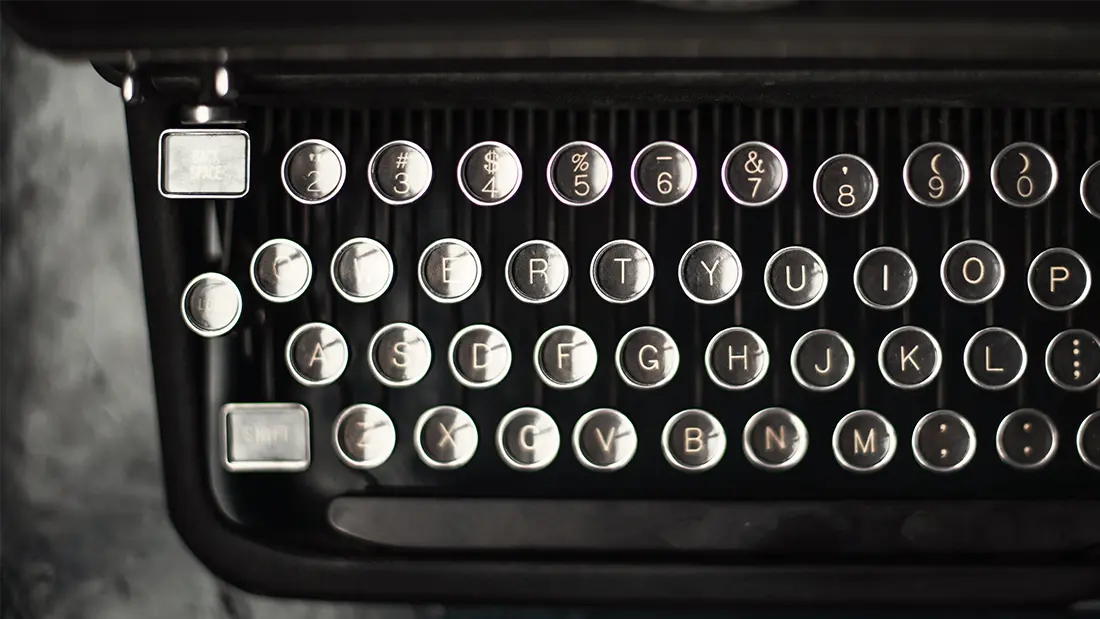In the complex realm of digital interactions, a discipline is increasingly emerging as a guiding beacon for users: UX Writing. Imagine yourself capable of selecting the perfect words, strategically arranging them to simplify, inspire, and guide users through the intricacies of websites, mobile applications, and SaaS software. This is the very essence of UX Writing that we will define in this article. Practices, differences, the threat of Artificial Intelligence: it's all here, all that's left is for you to explore.
Table of contents
Definition of UX Writing
UX Writing, or User Experience writing, is the subtle art of choosing the right words to guide, inspire, and simplify the interaction between users and digital interfaces (such as websites, mobile applications, or software). The discipline includes all textual elements with which users interact, such as buttons, menus, error messages, instructions, etc.
The main objective of UX Writing is to guide and inform users in a clear, concise, and user-friendly manner, in order to facilitate their navigation, understanding, and engagement with the product or service. This often involves the use of simple, direct language tailored to the target audience, as well as the elimination of any ambiguity or confusion.
UX Writing juggles between creativity and clarity to shape memorable and smooth experiences. But this discipline requires empathetically directing the writing, also for inclusion.
How to do User Experience Writing (UX Writing)?
Work on Tone of Voice
From labeling buttons to writing content within the interface, it is essential to work on the Tone of Voice in UX Writing.
The idea is to give a personality to the interface in order to emotionally connect with the user. The Norman Nielsen Group identifies 4 primary dimensions of Tone of Voice:
- Is the UX Writer trying to be funny? Or is the user approached in a serious manner? Obviously, one wouldn't be funny when the user loses data or encounters a frustrating error message.
- Is the writing formal or rather informal? It will depend more on the target, the company, the type of software.
- Does the UX Writer approach the user in a respectful manner, or rather insolently? Generally, one will try not to take a disrespectful tone, but it can be chosen as a brand identity to stand out from the competition (such as Karen's Diner or Martine Cosmetics, for example).
- Is the writing filled with enthusiasm? Or is it rather a dry and factual tone? It's up to the design team to decide.
Choosing the Tone of Voice will depend on the brand's personality, its users, and the context. It's important to understand that we'll avoid overly humorous error messages when a user is very frustrated. However, a bit of enthusiastic humor can sometimes help soften the blow.
Pay attention to harmony within the interface
Harmony within the interface involves not only writing but also intelligent adaptation of the text in relation to the visual. Textual elements must be carefully adjusted to integrate harmoniously into the overall design of the interface. Thus, UX Writers collaborate closely with designers during the wireframing and prototyping phases to ensure that text and design harmonize effectively to create a consistent user experience.
Also, more concretely, the UX Writer will ensure that textual elements are the same throughout the interface. For example, they will verify that the contact button is labeled consistently throughout the interface, instead of sometimes “Contact Us,” sometimes “Get in Touch,” or sometimes “Our Contact Page.”
Write with clear language
In UX Writing, simple and fluid language is used. The idea is not to demand attention or slow down the user to reread content within an interface.
The truth is, users don't read every word and letter on the web or in interfaces, they scan the text. They're there to accomplish a task, and the content of the interface is not an end in itself. Content is there to guide users to their goal smoothly and easily.
So, complex language should not be used. Humans prefer simple language to complex language. In UX Writing, the aim is not to make the user understand the meaning of a word. It's important to keep in mind that the word is there to guide the user. The simpler the language, the less the user will need to concentrate, and the more pleasant the experience will be for them. Don't be afraid if the language resembles that of a child.
Tips from the Norman Nielsen Group:
- Choose words that are easy to understand for your target audience for your texts, links, and buttons.
- Remove overly technical words, branded language.
- Properly use title hierarchies, write short sentences, and don't hesitate to make bulleted lists.
Use Technical Jargon Wisely
Technical jargon can be a real obstacle for users. Whether you're developing a B2B SaaS or B2C SaaS, t's important to remember that it is relative and depends on the target audience that will use the interface. The same word may make sense to someone but have no meaning to someone else. Therefore, it's necessary to verify through user tests that the target audience easily understands the technical jargon used. For example, the term UX Writing was most likely unknown to you before starting to read this article. So you must start by asking yourself two questions:
- Do my users know this term and concept?
- How important is it that I use this particular term?
To make a decision about a technical term to use, the following illustration can help.
What are the differences between UX Writing and Copywriting?
Objective and Context: Guiding vs. Convincing
The two disciplines are distinguished initially by a different objective and context. UX Writing aims to optimize the overall user experience by helping them accomplish their task efficiently and pleasantly. Copywriting, on the other hand, aims to persuade and convince readers in a different context such as advertising, marketing, or promotional content writing.
To clarify, UX Writing focuses on textual content, there to guide users through an interface in a clear manner. Copywriting seeks to sell a product or service by convincing readers to act in a specific way.
Utility in the Design Process
The two disciplines do not intervene at the same stage in the design process of a product or service. The UX Writer intervenes in the design and development phases, working closely with user interface designers and developers to integrate the content textually effectively into the user interface. The Copywriter intervenes at various stages of the marketing process, from creating an advertising campaign to writing content for a website or promotional brochures.
Style and Tone
Higher up, the Tone of Voice is mentioned. Precisely this, as well as the writing style, will differ depending on the context. And since UX Writing and Copywriting are linked to different contexts, the tone and style will also differ. UX Writing favors clear, concise, action-oriented language, emphasizing ease of understanding and friendliness. It more often uses a neutral and informative tone, but it can vary depending on the type of interface, the company's brand, and the target audience. Copywriting tends to be more expressive and persuasive, using techniques such as humor and wordplay to captivate the attention of the target audience and convince them to act. Thus, there tends to be more humor and enthusiasm with Copywriting, and more seriousness and formality with UX Writing. But of course, this tone varies depending on many factors.
Key Performance Indicators (KPIs)
To evaluate the impacts of writing choices, different KPIs will be chosen. UX Writing is often evaluated based on criteria such as ease of use of the user interface, conversion rate, and user satisfaction. Copywriting is generally measured based on criteria such as click-through rate, generated sales, conversion rate, and customer retention.
Can Generative Artificial Intelligence Replace the Work of UX Writing?
What AI Can Do
AI can help the UX Writer be more efficient in their work. It can be used to analyze and optimize existing content based on user reactions, A/B tests, and other relevant data. This can help the UX Writer refine their work and improve the effectiveness of messages.
Repetitive and basic tasks related to UX Writing, such as translating standardized messages or creating texts for similar use cases, can be automated using AI, allowing UX Writers to focus on more creative and strategic tasks.
Our advice: Specify your Tone of Voice in your "Prompt" (ask the generative AI) using this paragraph to copy and paste, changing the variables X:
“Write with this Tone of Voice: Choose X on a scale of 1 to 10, 1 being funny, 10 being serious. Choose X on a scale of 1 to 10, 1 being formal, 10 being casual. Choose X on a scale of 1 to 10, 1 being respectful, 10 being insolent. Choose X on a scale of 1 to 10, 1 being enthusiastic, 10 being factual”
Example?
Here's a prompt: “Can artificial intelligence replace the work of UX Writing? Write with this Tone of Voice: Choose 7 on a scale of 1 to 10, 1 being funny, 10 being serious. Choose 10 on a scale of 1 to 10, 1 being formal, 10 being casual. Choose 2 on a scale of 1 to 10, 1 being respectful, 10 being insolent. Choose 4 on a scale of 1 to 10, 1 being enthusiastic, 10 being factual”.
Here's Chat-GPT 3.5's response: “So here it is: AI, this little wonder of modern times, it's really great, you know? It can do a lot of things, and some people even think it can replace UX writers! But let's be serious for a moment, can AI really replace the work of a UX writer? Let's take a look at the facts, shall we?...
What AI Can't Do
However, AI cannot fully replace the work of UX Writing. Writing is not just about producing text; it's about understanding users, their needs, their emotions, and their behaviors. The subtleties and nuances that human writers bring to the table are irreplaceable and essential for creating truly effective and user-centered content.
Therefore, while AI can be a valuable tool in the UX Writing process, it should be used to complement human efforts rather than replace them entirely.
Conclusion
UX Writing est une discipline à part entière au sein de la stratégie d’UX Design. Elle permet de renforcer une image de marque, mais pas que. En travaillant l’UX Writing d’une interface (par exemple SaaS ou un mobile), les utilisateurs verront leur expérience grandement améliorée. Pour être sûr des résultats, comme à chaque étape du processus UX : le meilleur moyen est de tester auprès des utilisateurs, d’itérer et d’ajuster. De l’autre côté, pour une entreprise développant des logiciels comme les SaaS, une expérience utilisateur améliorée apporte de nombreux bénéfices et avantages. Alors n’hésitez pas à sortir la plume la plus adaptée pour le bien-être de vos utilisateurs !



